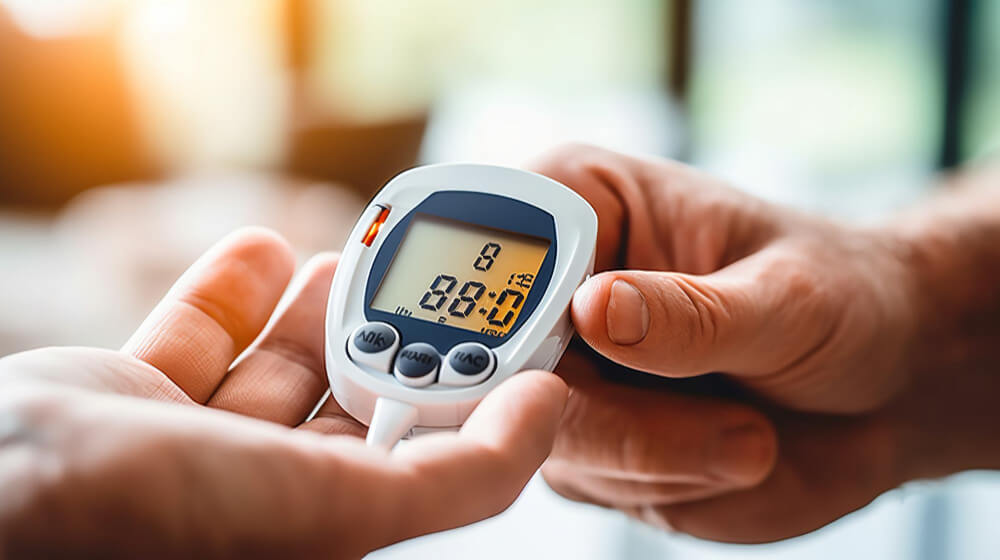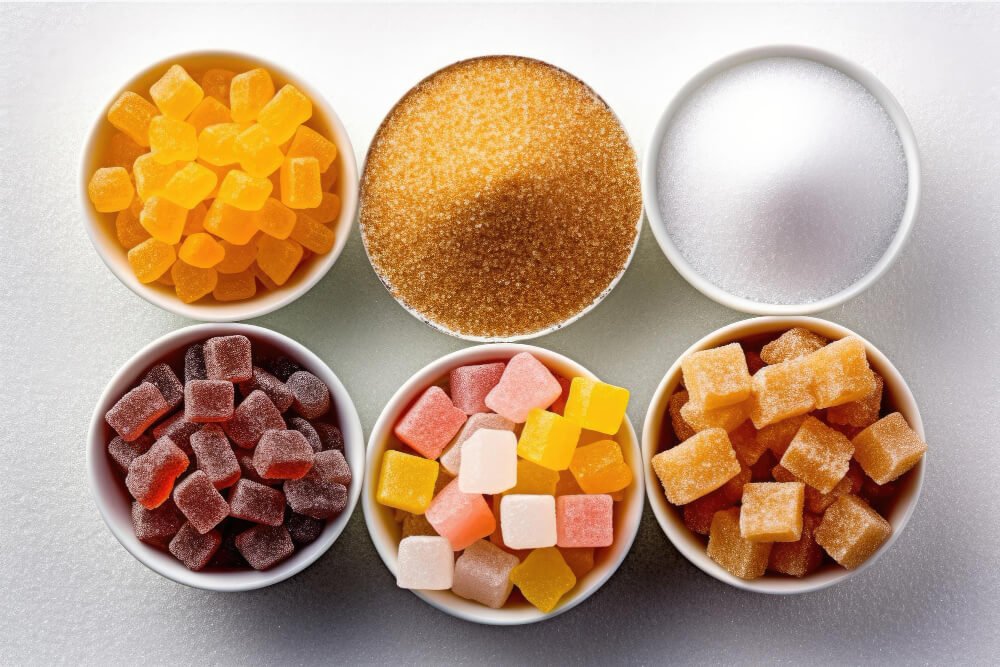This key additive influences everything from the thickness of sauces to the energy content of sports drinks.
In today’s food industry, additives enhance product quality, texture, and shelf life.
Among these additives, maltodextrin is a versatile and widely used ingredient.
This comprehensive blog post will delve into the nature of maltodextrin, its applications in various food and beverage products, and the reasons behind its popularity. We will also explore its historical context, health considerations, and the impact it has on the food industry.
The key hidden ingredient I am talking about here is called maltodextrin, and if you have SIBO or other severe gut issues, then it could be the one catalyst making you sick.
Unfortunately, maltodextrin is a widely used food additive that has become a staple in the food industry due to its versatility and functional properties. It is a carbohydrate polysaccharide derived from natural starch sources such as corn, wheat, rice, or potato.
How this crap you eat is produced
Producing maltodextrin involves the hydrolysis of starch, which breaks down the starch molecules into smaller units. This results in a white, powdery substance with a neutral taste. This process is typically achieved through enzymes or acids, which catalyze the breakdown of the starch.
The primary reason for the widespread use of maltodextrin in food products is its ability to serve multiple functions.
Maltodextrin is often added to soups, sauces, and salad dressings as a thickening agent to enhance their texture and viscosity without altering their flavour profile.
This makes it an ideal ingredient for achieving the desired consistency in various culinary applications. In addition to its thickening properties, maltodextrin is also used as a filler in products like artificial sweeteners and powdered drink mixes, where it adds volume and bulk without contributing a significant amount of sweetness.
Another important function of maltodextrin is its role as a preservative. By binding water, maltodextrin helps reduce water activity in food products, inhibiting the growth of microorganisms and extending the shelf life of packaged foods.
This makes it a valuable ingredient in the food industry, where maintaining the freshness and safety of products is a top priority. Furthermore, maltodextrin can also be used as a mild sweetener in baked goods and candies, providing a subtle sweetness without the intensity of sugar.
In sports nutrition, maltodextrin is highly valued for its rapid absorption and ability to provide a quick energy source.
Where you are likely to find this toxic ingredient
Maltodextrin is commonly found in sports drinks and energy bars, where it helps replenish glycogen stores and sustain energy levels during physical activity. Its high glycemic index makes it an efficient carbohydrate source for athletes and fitness enthusiasts who require immediate energy replenishment.
The applications of maltodextrin extend beyond food and beverage products.
It is also used in the pharmaceutical industry as a binding agent in tablets and capsules, where it facilitates the compression of ingredients and ensures the stability of the final product.
Additionally, maltodextrin is found in dairy products such as ice cream and yogurt, contributing to the creamy texture and mouthfeel.
This toxin has been around for years.
Maltodextrin has been a part of the food industry for several decades, with its usage dating back to the mid-20th century. The development of enzymatic hydrolysis techniques has significantly improved the efficiency of maltodextrin production, making it more accessible and cost-effective for manufacturers. As a result, maltodextrin has become an integral component in a wide range of food and beverage products, from processed snacks to nutritional supplements.
Despite its widespread use, maltodextrin is generally recognized as safe (GRAS) by the Food and Drug Administration (FDA). However, its impact on health can vary depending on individual dietary needs and consumption levels.
Diabetics should be concerned.
One of the main concerns associated with maltodextrin is its high glycemic index, which can lead to rapid spikes in blood sugar levels. This makes it unsuitable for individuals with diabetes or those following a low-glycemic diet. Additionally, some people may experience digestive issues such as bloating, gas, or diarrhea after consuming maltodextrin, particularly in large quantities.
It is also important to note that while maltodextrin provides energy, it lacks nutritional value in terms of vitamins and minerals. Therefore, it should be consumed as part of a balanced diet that includes a variety of nutrient-dense foods. As with any food additive, moderation is key in incorporating maltodextrin into the diet.
Maltodextrin and Health: A Closer Look at how it can affect your health in six key ways
While maltodextrin is widely used in the food industry for its functional properties, it is essential to be aware of its potential health implications. Here are six ways maltodextrin can negatively impact your health and hinder weight loss efforts:

One: It messes with your blood sugar levels
The Main carbohydrate used in maltodextrin is derived from starch through hydrolysis.
It is commonly used as a food additive to thicken, stabilize, or sweeten products.
Despite its widespread use, maltodextrin significantly impacts blood sugar levels, primarily due to its high glycemic index (GI).
The glycemic index measures how quickly a carbohydrate raises blood glucose levels after consumption. Foods with a high GI, like maltodextrin, are rapidly digested and absorbed, leading to a swift and pronounced increase in blood sugar levels.
The mechanism behind maltodextrin’s effect on blood sugar is related to its structure and digestion. Maltodextrin is composed of short chains of glucose molecules. When consumed, these chains are quickly broken down into individual glucose units by enzymes in the digestive tract. This rapid breakdown and glucose absorption into the bloodstream cause a sharp rise in blood sugar levels.
For individuals with diabetes or insulin resistance, this spike can be particularly problematic, as their bodies may struggle to regulate the sudden influx of glucose.
Furthermore, research has shown that the consumption of high-GI foods like maltodextrin can lead to increased insulin demand, which, over time, can contribute to insulin resistance and the development of type 2 diabetes.
A study published in the “American Journal of Clinical Nutrition” found that diets high in glycemic index are associated with an increased risk of type 2 diabetes and heart disease. Therefore, it is advisable for individuals, especially those with metabolic disorders, to be mindful of their maltodextrin intake and opt for lower GI alternatives when possible to manage blood sugar levels better and reduce the risk of related health complications.

Two: Contributes to Weight Gain
Weight gain can be attributed to its high glycemic index (GI) and its prevalent use as a filler and sweetener in processed foods.
Foods with a high GI, like maltodextrin, are rapidly digested and absorbed, leading to a quick spike in blood sugar levels followed by a sharp drop. This rapid fluctuation in blood sugar can trigger hunger signals and cravings for more high-carbohydrate foods, leading to increased calorie intake. Over time, this cycle of rapid blood sugar spikes and crashes can contribute to overeating and weight gain.
Additionally, maltodextrin is often used in processed foods to enhance texture, flavour, and shelf life.
These foods are typically calorie-dense and nutrient-poor, providing little satiety and nutritional value. The consumption of such foods can easily lead to a surplus of calories, further contributing to weight gain.
A study published in the “American Journal of Clinical Nutrition” found that a higher intake of high-GI foods is associated with an increased risk of obesity and related health issues.
Furthermore, maltodextrin’s impact on gut health may also play a role in weight gain. Emerging research suggests that maltodextrin can alter the gut microbiota, promoting the growth of harmful bacteria and disrupting the balance of the gut ecosystem. This imbalance can lead to inflammation and impaired metabolism, which are factors associated with obesity and metabolic disorders.
Maltodextrin may indirectly contribute to weight gain and hinder weight loss efforts by affecting gut health.

Three: Disrupts Gut Health
Studies have shown that maltodextrin can disrupt the balance of the gut microbiota, promoting the growth of harmful bacteria while inhibiting beneficial bacteria. This imbalance, known as dysbiosis, can compromise the integrity of the gut barrier, leading to increased intestinal permeability, also known as “leaky gut.” When the gut barrier is compromised, toxins and undigested food particles can escape into the bloodstream, triggering inflammation and immune responses that can contribute to various health issues, including digestive disorders, allergies, and autoimmune diseases.
Moreover, maltodextrin has been found to interfere with mucus production in the gut, which serves as a protective layer for the intestinal lining.
A study published in the “Journal of Nutritional Biochemistry” demonstrated that consuming maltodextrin could reduce gene expression in mucus production, weakening the gut’s defence mechanisms. This reduction in mucus can make the gut more susceptible to damage and infection, further exacerbating gut health issues.
Maltodextrin can also exacerbate symptoms of small intestinal bacterial overgrowth (SIBO), a condition characterized by an abnormal increase in bacteria in the small intestine.
Since maltodextrin is a readily fermentable carbohydrate, it can provide a food source for these bacteria, leading to increased gas production, bloating, and abdominal discomfort, which are common symptoms of SIBO.
Additionally, the rapid fermentation of maltodextrin can produce short-chain fatty acids and other metabolites that irritate the gut lining and worsen symptoms.
For individuals with SIBO, reducing or eliminating maltodextrin from the diet may help alleviate symptoms and improve gut health.

Four: Triggers Inflammation
The mechanism behind this inflammatory response is multifaceted.
First, the rapid increase in blood sugar levels caused by maltodextrin’s high glycemic index can produce advanced glycation end products (AGEs). AGEs are harmful compounds that form when protein or fat combines with sugar in the bloodstream.
They are known to promote oxidative stress and inflammation, contributing to the development of chronic diseases such as diabetes and cardiovascular disease.
Additionally, maltodextrin can disrupt the balance of the gut microbiota, leading to gut dysbiosis. This imbalance in the gut ecosystem can compromise the integrity of the intestinal barrier, allowing harmful substances and bacteria to enter the bloodstream, a condition known as “leaky gut.”
These foreign substances in the blood can trigger an immune response, resulting in systemic inflammation. A study published in the journal “PLoS One” found that maltodextrin can increase the adherence and invasion of harmful bacteria, such as Salmonella, in the gut, further exacerbating inflammation.
Furthermore, for individuals already dealing with chronic inflammation from other ailments, such as autoimmune diseases or metabolic disorders, the consumption of maltodextrin can worsen their symptoms.
The additive effect of maltodextrin-induced inflammation on top of existing inflammation can amplify the overall inflammatory response, potentially leading to worsening symptoms and an increased risk of complications.
Therefore, individuals with chronic inflammatory conditions must be mindful of their maltodextrin intake and consider reducing or eliminating it from their diet to help manage their symptoms and reduce overall inflammation.

Five: It messes with your hunger signals
Satiety signals and hunger can be attributed to its high glycemic index (GI) and rapid digestion.
Foods with a high GI, like maltodextrin, are quickly broken down and absorbed into the bloodstream, leading to a rapid spike in blood sugar levels.
A swift decline follows this initial surge in blood sugar, often called a “sugar crash.”
This rapid fluctuation in blood sugar levels can disrupt the body’s natural hunger and satiety signals, making it difficult to regulate appetite and food intake.
The disruption of satiety signals by maltodextrin can lead to increased feelings of hunger shortly after eating. When blood sugar levels drop rapidly after consuming high-GI foods, the body responds by signalling hunger to prompt more food intake to restore blood sugar levels.
This can create a cycle of eating and craving high-carbohydrate foods, which can contribute to overeating and weight gain.
A study published in the “American Journal of Clinical Nutrition” found that diets high in glycemic index are associated with increased hunger and higher food intake, leading to weight gain over time.
Furthermore, consuming maltodextrin and other high-GI carbohydrates can impact the release of hormones that regulate appetite, such as insulin, ghrelin, and leptin.
Insulin is released in response to rising blood sugar levels, but frequent insulin spikes can lead to insulin resistance. This condition can impair the body’s ability to regulate blood sugar and appetite effectively.
Ghrelin, known as the “hunger hormone,” can be influenced by rapid changes in blood sugar, leading to increased hunger signals. Leptin, the hormone responsible for signalling satiety, can be affected by insulin resistance and inflammation, further impairing the body’s ability to regulate hunger and fullness.
As a result, the consumption of maltodextrin can contribute to a dysregulation of these hormones, promoting increased appetite, overeating, and weight gain.

Six: It may trigger a negative reaction
Allergic reactions to maltodextrin can vary in severity. They may include symptoms such as skin rashes, itching, hives, swelling of the lips, tongue, or throat, difficulty breathing, and gastrointestinal issues like nausea, vomiting, or diarrhea.
Additional Considerations
When it comes to maltodextrin, moderation is key. While it is nearly impossible to avoid it entirely, especially in processed foods, being mindful of its presence and limiting consumption can help mitigate its negative health effects. Reading labels and choosing whole, unprocessed foods when possible can reduce your intake of maltodextrin and support overall health and weight loss efforts.
Conclusion
Understanding the potential health implications of maltodextrin is crucial for making informed dietary choices.
While it serves functional purposes in the food industry, its impact on blood sugar levels, gut health, inflammation, and weight management should be considered.
You can support your health and wellness goals by being mindful of maltodextrin consumption and prioritizing a balanced diet.
Cooking at home helps.
Here is a very simple and easy recipe you could try, with several more options in the recipe section.

Easy Ramen
Ingredients
For the broth
- 3 garlic cloves sliced
- ¾ tsp salt
- 1 tbsp sesame oil toasted
- 1 tsp sesame oil toasted
- 225 g ground pork
- 2 carrots grated
- 4 green onions sliced, white and green parts separated
- 1½ tbsp ginger grated
- 2 tsp chili garlic sauce
- 2 L chicken broth
- 4 tbsp white miso paste
- 2 tbsp unsalted butter
For the toppings
- 4 large eggs soft boiled
- 230 g Ramen noodles dried
- chili garlic sauce
- 4 sheets nori chopped
- ½ cup bean sprouts
- 4 tbsp sweet corn canned
- 2 tbsp toasted sesame seeds
Instructions
What you need to do
- Place the garlic with ¼ teaspoon of salt onto a chopping board, and using the edge of a knife, mash together into a paste. Set aside.
- Heat one tablespoon of the sesame oil in a large pot over a medium heat. Add the pork and the remaining ½ teaspoon of salt and cook for 5-7 minutes. Transfer the pork to a plate.
- Add the remaining one teaspoon of sesame oil to the same pot and cook the carrots, the white parts of the green onion and half of the green parts of the green onion. Cook over medium heat for 2-3 minutes, until the carrots are tender.
- Push the vegetables aside to clear a space in the centre of the pot. Add the ginger, chilli garlic sauce and reserved garlic paste and cook for 30 seconds, taking care not to burn the garlic.
- Next, stir in the pork and any pork juices, then add the chicken broth. Increase the heat to high and bring just to a boil. Add the miso and butter and stir until the miso is fully dissolved. Cover the pot and keep warm over low heat until ready to serve.
- Cook the noodles according to the instructions on the packaging and prepare all the other topping ingredients.
- To serve: Divide the noodles and pork between 4 bowls. Ladle the hot broth over the top. Top with egg halves, the remaining green onion, and the remaining toppings. Serve hot.
Notes
Nutritional Information
- Calories: 617
- Fats: 31g
- Carbs: 59g
- Protein: 29g
- Fibre: 5g
Nutrition
You can also follow me on YouTube for the latest, science-backed research on health, weight and weight training, and an endless supply of healthy recipes.
Download your FREE Fat Loss Recipe book here.
I appreciate your support.
Disclosure: AI technology assisted in the construction of this informative post and all of the scientific research for this article.
